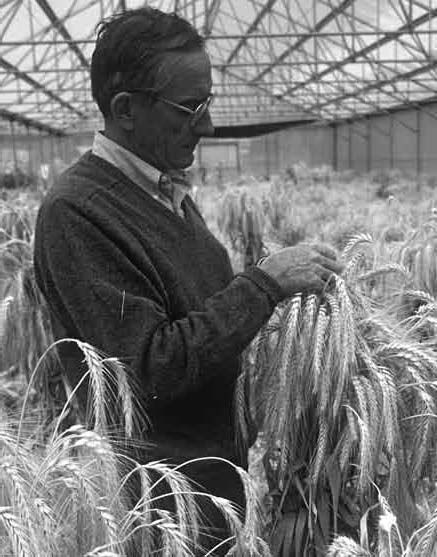In a gala ceremony on 18 October at the National Anthropology and History Museum of Mexico, AgroBio-México recognized Silverio García’s PhD thesis as one of the best in the country. AgroBio-México is a non-profit association that brings together various organizations interested in agricultural biotechnology education, promotion, research, production and commercialization in Mexico.
García, a postdoctoral associate, is presently employed at a state-level plant biotechnology research centre (CIATEJ-CONACYT), and worked for approximately nine years at CIMMYT as an entomologist and plant breeder, focusing specifically on the application of molecular markers.
García’s thesis deals with the biochemical, biophysical and genetic bases of insect resistance in maize, and focuses on developing varieties that are resistant to storage pests, particularly maize weevil. His results are already being used to develop and distribute improved varieties. With this new maize, producers could reduce losses in storage by as much at 30 percent.
García’s research is built upon work by David Bergvinson, former CIMMYT entomologist, and was made possible through scientific collaboration with CIMMYT, the Universidad Autónoma Metropolitana, and the University of Ottawa in Canada, along with funding from CIDA, and support from CONACYT in Mexico.
“In light of the serious threats to natural resources and food security, agricultural biotechnology is emerging as a new tool that will help fight the problems of food production,” says García.
CIMMYT’s presence was highly visible at the presentation ceremony, as Natalia Palacios, maize nutrition and quality specialist, received an honorable mention for her efforts to disseminate science to the general public and to children in particular.
The first place winner in this category (Rafael Guadarrama, of the highly regarded TV news organization, Canal 11), said his reports on CIMMYT research were a decisive factor that led to his win.
Lastly, Pedro Brajcich, Director General of INIFAP and CIMMYT Board member, was among the experts and VIPs invited to sit at the head table for the event.

 Former CIMMYT wheat program director and retired program manager at the Australian Centre for International Agricultural Research (ACIAR), Tony Fischer, was awarded the Order of Australia as part of the Queen’s 2007 Birthday Honours List.
Former CIMMYT wheat program director and retired program manager at the Australian Centre for International Agricultural Research (ACIAR), Tony Fischer, was awarded the Order of Australia as part of the Queen’s 2007 Birthday Honours List.